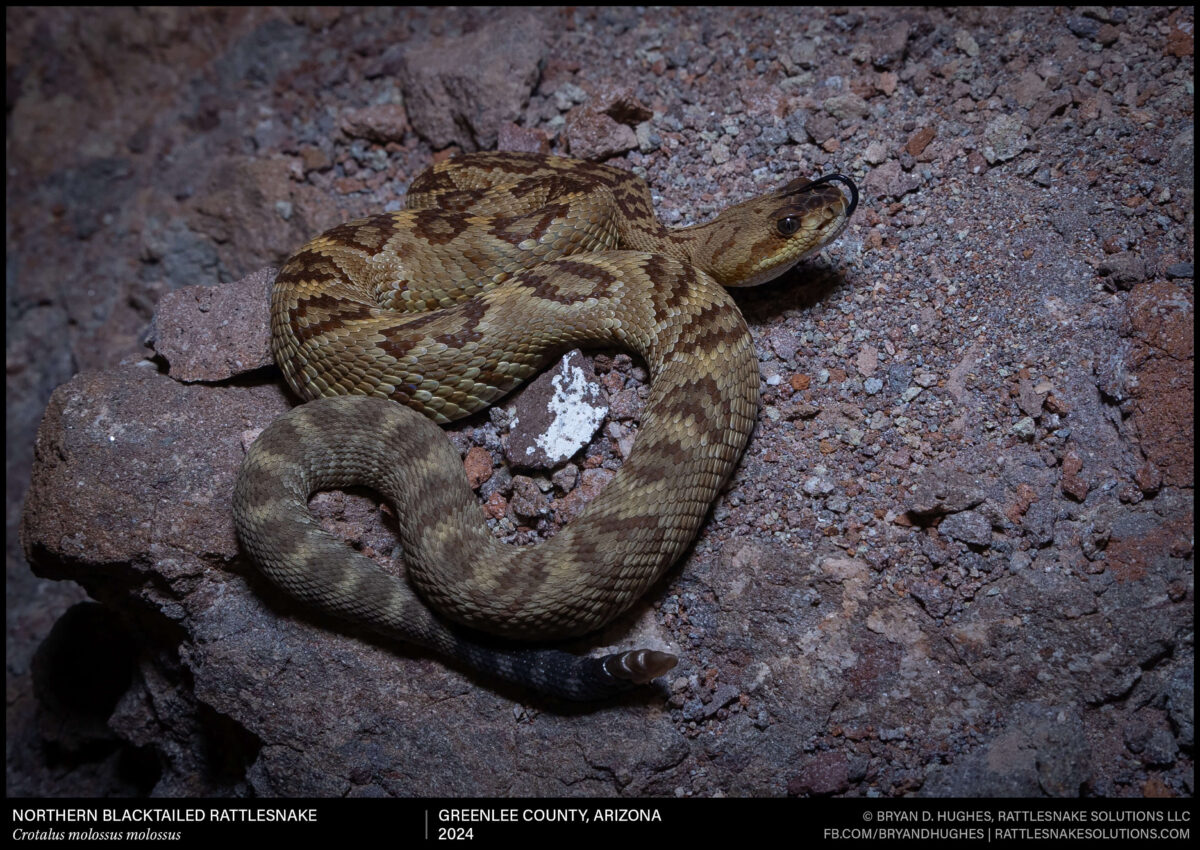A young Blacktailed Rattlesnake from the eastern end of Arizona. While not as sharply contrasted as the population from just south in the Sky Islands, I personally like the clean, subtle tones and velvety appearance of these snakes in this area.

A young Blacktailed Rattlesnake from the eastern end of Arizona. While not as sharply contrasted as the population from just south in the Sky Islands, I personally like the clean, subtle tones and velvety appearance of these snakes in this area.

Can you tell the age of a rattlesnake from counting the segments of its rattle? For the most part: no. But sometimes, it’s easy. This young Western Diamondback Rattlesnake was found late in the monsoon season. From its rattle, it can be seen it’s shed its skin exactly two times – once to reveal the full button (the notched last segment) from the prebutton it was born with, which is now fully articulated against the proximal segment, which is attached to the tail. That means that this snake was either a successful early-monsoon baby, or a terribly unsuccessful one-year-old. Based on its size and very healthy weight, the former is certainly true. That means that this snake, at the time that it was photographed, was around 2 months old.
It was found crossing a roadway, and escorted to the side to be on its way.

Several Western Diamondback Rattlesnakes moving around their winter den on a cloudy, warm Spring day near Tucson. These snakes move daily on the surface like this, mostly avoiding detection, for a few weeks during their transition from hibernation to spring hunting. During that time, a lot of social activity takes place.
